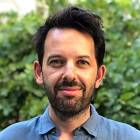
Australia’s second-richest person Andrew “Twiggy” Forrest was in Afghanistan in September to investigate the viability of resource projects in the war-torn country. According to The Australian Financial Review, “Forrest has been travelling to some of the world’s most dangerous nations in search of new resource projects and pursuing philanthropic interests”.
Forrest’s company, Fortescue Metals Group, issued a press release around the visit to Kabul that stressed the development of hydropower and geothermal projects for green industries as well as campaigns on the eradication of slavery and support of local employment.
On the face of it, this news could be greeted with support by Afghans and foreigners as the noble efforts of an Australian billionaire and philanthropist to help one of the poorest nations on the planet. Australian media coverage, which barely mentioned the Forrest trip, was wholly positive and offered little more than public relations dressed up as news stories.
This is typical of how Forrest is often covered in the media, especially when he travels to conflict zones or unstable states, and largely ignores the political, environmental and human rights context for the trips.
Rarely mentioned are the ways in which mining projects are realised in places like the Democratic Republic of Congo and Papua New Guinea (where Australian mining firms have a shoddy record of exploitation), other recent Forrest destinations. Think corruption, bribery, militias and violence.
I’ve spent more than a decade investigating the Afghan mining industry and the country has some of the largest untapped mineral reserves in the world, estimated to be worth up to US$1 trillion. These include lithium (a key component of electric car batteries), copper, natural gas, petroleum and rare earth elements.
Successive US administrations have tried to kick-start the Afghan mining industry but it’s mostly been a colossal failure with wasted expenditure and loss of life. Both the Taliban and Islamic State currently earn millions of dollars annually from illegal mining across the country.
What’s been missing from media coverage of Fortescue’s attempts to enter the Afghan mining industry is any understanding of what his company would need to do to effectively operate in the nation (along with questions about the viability and climate change implications of the technology around hydropower and geothermal).
Forrest travelled to Afghanistan near the end of Donald Trump’s four-year term, with the US having aggressively pushed the government in Kabul to allow foreign mining companies to exploit its largely untapped mineral wealth.
After nearly 20 years of the Afghan war, only a tiny trickle of earnings from mining projects have benefitted the Afghan population. This is an industry that’s designed to enrich local and foreign elites.
In 2019, I reported for US outlet The Nation on secret documents written by a senior Afghan official for close associates of Afghan President Ashraf Ghani.
One file, written soon after Trump was elected, explained that the Afghan “political elite is seeking rent from the potential of the extractive industries through development of new networks which include shadow actors and characters who oppose the emergence of a strong state in Afghanistan. Among the actors who are doing a lot of damage [are] active and former [Afghan] diplomats turning into lobby[ists] for junior mining companies”.
Forrest is not the first foreigner coming to Kabul and selling a glossy vision of mutually beneficial mining projects. Erik Prince, founder of the private military contractor Blackwater, visited Afghanistan as a “Trump’s adviser” in 2018 to explore rare earth mining, allow Washington to source lithium for batteries and offer job prospects for young Afghans. The incoming Biden administration will likely continue to withdraw US troops (while keeping a small counter-insurgency force).
When I reported on Prince’s plans in 2018, I was told by Afghans in the mining sector that the only way his plans could be realised was through the hiring of militias to pay off the right warlords and wrestle control of minerals from insurgent groups such as the Islamic State and the Taliban.
Although Fortescue has talked about “green” resource projects in Afghanistan and other poor nations, there’s too little investigation into what this means on the ground.
Andrew Forrest may have good intentions in Afghanistan, but recent history requires us to be far more sceptical about his rhetoric and stated goals.
Antony Loewenstein is an independent journalist, filmmaker and author of Disaster Capitalism: Making A Killing Out Of Catastrophe and Pills, Powder and Smoke: Inside the Bloody War on Drugs.








Anthony, let me re-assure you – Forrest has no good intentions. Just take a look at the Indue Card, the battle of the Yindjibarndi people to gain and preserve their Native Title Rights (let alone royalties) over land being mined by Fortescue. A thirteen year battle waged by Forrest that failed anyway but cost Fortescue shareholders multi-millions in going all the way to the High Court. Fortescue’s suspension of royalty payments (to other Native Title Holder groups) because they haven’t agreed to his latest demands. Fortescue’s use of Section 18 C of the Aboriginal Heritage Act to obtain ministerial approval to destroy Aboriginal heritage on Fortescue’s mine sites.
Don’t talk about taxation and never mention Anaconda!
“Andrew Forrest may have good intentions…” and water may run uphill.
There is more than sufficient evidence of his real intentions in this country – imagine what he’d do where there was less attention to his activities.
Imagine !?…Future employment prospects for ex-SAS and other assorted mercenaries..
Perhaps he’ll copy Prince – Brackishwater?
No wonder he is going to Afghanistan. Out of sight out of mind.
Know your history – in relation to Afghanistan – otherwise you will repeat the endless failures there. The very first Afghan campaign that the British under took in the 19th century they sent in the troops to subdue them and 1 person only marched out. So what is new – war after war, retreat after retreat, failure after failure by country after country.
The slaughter of the first Raj invasion did not occur due to fighting but during the retreat, rather than overwinter in a well defended cantonment, from Kabul in January 1842.
Through the Khyber Pass. In Winter.
They didn’t want Afghanistan per se, just a buffer state against Russia (see the Great Game) and 20yrs earlier had helped a previous ruler unite the Afghans into something resembling a country. He proved fickle.
Good intentions? Forrest? NEVER. The man is a tax avoiding thief. He has destroyed huge swathes of country, wont pay royalties, treats Traditional Owners like his personal serfs. The man is everything that is wrong about Australia in one thick little package.
Also been hanging around the Congo during covid. Cant get any lower than a white man prowling around in the Congo doing business. Wonder if he has his own private Congolese army yet? Ex SAS members have a whole new line of employment open to them now……..,.